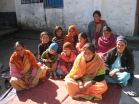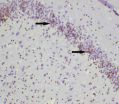(Press-News.org) An international team of researchers led by scientists at The Wistar Institute have discovered and defined LIMD2, a protein that can drive metastasis, the process where tumors spread throughout the body.
Their study, published in the March issue of the journal Cancer Research, defines the structure of LIMD2 and correlates the protein in metastatic bladder, melanoma, breast, and thyroid tumors. Wistar scientists have also developed and patented a monoclonal antibody that may one day be used as a prognostic test to see if tumors have LIMD2, and plans are underway to create inhibitors—potential drugs that may target cells that produce LIMD2.
"This is the result of a five year effort to characterize LIMD2, which is a new protein that we found to be expressed only in metastatic lesions, and not in the primary tumor or in normal tissues or organs," said Frank Rauscher, III, Ph.D., a professor in The Wistar Institute Cancer Center. "LIMD2 is a great candidate for targeting with a drug, which would inhibit the ability of these cells to leave a primary tumor and to colonize other organs."
According to Rauscher, LIMD2 is part of a family of proteins that communicate signals to the cell nucleus from the cytoskeleton of the cell—the structural scaffolding that supports the cell. Scientists have looked to these proteins as potential drivers of metastasis since they control signals that regulate how the cell interacts with nearby cells, including how cells may migrate and adhere to other tissues, which are traits tumors use to metastasize. LIMD2, in particular, is a key component to a chain of chemical events that control cell motility, or movement, which is a defining characteristic of metastasis, Rauscher says.
"Cancer metastasis is really the final frontier in cancer medicine, because metastasis kills," Rauscher said. "We can treat a primary tumor, usually successfully, with surgery, drugs, chemotherapy or radiation, but once the cancer spreads to organs throughout the body it frequently becomes unstoppable."
"We contend that LIMD2 is a marker that could help physicians profile tumors, and a potential drug target that could yield a potent therapy for a variety of advanced cancers, perhaps in combination with existing or emerging therapies," Rauscher said.
LIMD2 had earlier been identified as a biomarker for papillary thyroid cancer metastasis and, as a member of the a family of proteins known to be active in both the cell's nucleus and cytoplasm, piqued the interest of the Rauscher laboratory. Their studies demonstrated that LIMD2 appeared in abundance in samples of metastatic tumors, but were rarely expressed by primary tumors or healthy cells.
To further characterize the structure and function of LIMD2, the Rauscher laboratory collaborated with scientists across The Wistar Institute Cancer Center and scientists from around the world. They developed a structural model of the LIMD2 protein and demonstrated that the protein interacted with integrin-linked kinase (ILK), an enzyme with critical importance to the process of cellular movement, proliferation, and metastasis. Computer modeling analysis revealed that LIMD2 binds to ILK, and further studies demonstrated that LIMD2 promotes ILK activity. The "pocket" where LIMD2 binds to ILK, the researchers say, could be a promising target for a small molecule-based drug inhibitor.
INFORMATION:
Work in the Rauscher laboratory is supported by National Institutes of Health grants CA129833, CA010815, CA163761, and DOD-BCRP W81XWH-11-1-0494, The Samuel Waxman Cancer Research Foundation, Susan G. Komen, and The Noreen O'Neill Foundation for Melanoma Research.
Wistar co-authors of this study include Jayashree Karar, Ph.D., Zhaoyuan Hou, Ph.D., Christopher S. Paterno, Ph.D., Alexandra S. Carolin, Ph.D., and first author Hongzhuang Peng, Ph.D. Wistar contributors also include professors Meenhard Herlyn, D.V.M, D.Sc., Andrew J. Caton, Ph.D., David W. Speicher, Ph.D., Emmanual Skordalakes, Ph.D., and Qihong Huang, M.D., Ph.D. Co-authors also include Mehdi Taleb Zadeh Farrooji, Michael J. Osborne, Ph.D., and Katherine L. B. Borden, PH.D. of the University of Montreal, Institute for Research in Immunology and Cancer; Shaukat S. Dedhar, Ph.D., and Paul C. McDonald, Ph.D., of the British Columbia Cancer Research Centre; Mei He3, Electron Kebebew, M.D., of the National Cancer Institute; William Fredericks, M.D., and Bruce Malkowicz, M.D., of the Department of Surgery of University of Pennsylvania and Veterans Affairs Medical Center; Torben Orntoft, M.D, of the Aarhus University Hospital at Skejby Sygehus, Denmark, and Jeremy W. Prokop, Ph.D., of University of Akron
The Wistar Institute is an international leader in biomedical research with special expertise in cancer research and vaccine development. Founded in 1892 as the first independent nonprofit biomedical research institute in the country, Wistar has long held the prestigious Cancer Center designation from the National Cancer Institute. The Institute works actively to ensure that research advances move from the laboratory to the clinic as quickly as possible. The Wistar Institute: Today's Discoveries – Tomorrow's Cures. On the Web at http://www.wistar.org.
A signal to spread: Wistar scientists identify potent driver of metastasis
Protein correlates with breast, bladder, melanoma, and thyroid tumors
2014-03-10
ELSE PRESS RELEASES FROM THIS DATE:
Malnourished children are better fed when mothers have network of peers
2014-03-10
URBANA, Ill. – Women in rural India who participate in a vocational training program learn more than just life skills. A recent University of Illinois study found that mothers who participated in a program designed to educate and empower women gained a network of peers that led to increased bargaining strength in the home, and significantly improved their children's consumption of rice and dairy.
"Prior to participating in Mahila Samakhya, which loosely translates to women of equal value, most of the participants reported regularly communicating with fewer than five ...
New research shows elevated mercury from in-ground wastewater disposal
2014-03-10
As towns across Cape Cod struggle with problems stemming from septic systems, a recent study by a Woods Hole Oceanographic Institution (WHOI) scientist focuses on one specific toxic by-product: mercury. In a study of local groundwater, biogeochemist Carl Lamborg found microbial action on wastewater transforms it into more mobile, more toxic forms of the element.
His findings were published in Environmental Science and Technology in November 2013.
Mercury (Hg) is a toxic trace metal. Wastewater contains small amounts of it, but Lamborg found the chemical processes that ...
What's new in autism spectrum disorder? Harvard Review of Psychiatry presents research update
2014-03-10
Philadelphia, Pa. (March 10, 2014) – Recent years have seen exciting progress in key areas of research on autism spectrum disorders (ASD): from possible genetic causes, to effective treatments for common symptoms and clinical problems, to promoting success for young people with ASD entering college. Updates on these and other advances in ASD research are presented in the March special issue of Harvard Review of Psychiatry. The journal is published by Lippincott Williams & Wilkins, a part of Wolters Kluwer Health.
"Autism is one of the most challenging disorders to ...
Phosphorylation of tau protein in rats subjected to cerebral ischemia-reperfusion injury
2014-03-10
Transient brain ischemia has been shown to induce hyperphosphorylation of the microtu-bule-associated protein tau. To further determine the mechanisms underlying these processes, Dr, Bo Song and co-workers from School of Life Sciences, Tsinghua University in China found for the first time that the interaction of tau with glycogen synthase kinase (GSK)-3β and protein phosphatase 2A is altered during transient brain ischemia. In addition, the researchers found that the neuroprotective function of lithium chloride may depend partly on the altered phosphorylation of tau, ...
Pretreatment with SSTF prevents hippocampal neuronal apoptosis due to cerebral infarction
2014-03-10
Focal cerebral ischemia-reperfusion may lead to neuronal loss in the hippocampus, which is regarded as one of the basic pathological mechanisms underlying cognitive impairment. The neuronal apoptosis plays an important role in cerebral infarction, determining the number of loss of neurons and infarct volume. Growing evidence has suggested that Chinese herbs can inhibit hippocampal apoptosis caused by ischemia-reperfusion. Prof. Shumin Zhao and team from Chengde Medical College in China pretreated rats with scutellaria baicalensis stem-leaf total flavonoid (SSTF) intragastrically ...
Agroforestry can ensure food security and mitigate the effects of climate change in Africa
2014-03-10
Agroforestry can help to achieve climate change mitigation and adaptation while at the same time providing livelihoods for poor smallholder farmers in Africa.
Scientists at the World Agroforestry Centre (ICRAF) say agroforestry - which is an integrated land use management technique that incorporates trees and shrubs with crops and livestock on farms - could be a win-win solution to the seemingly difficult choice between reforestation and agricultural land use, because it increases the storage of carbon and may also enhance agricultural productivity.
In a special issue ...
Smokers' brains biased against negative images of smoking
2014-03-10
This news release is available in French. What if the use of a product influenced your perception of it, making you even more susceptible to its positive aspects and altering your understanding of its drawbacks? This is precisely what happens with cigarettes in chronic smokers, according to a recent study by the Institut universitaire en santé mentale de Montréal and Université de Montréal.
The study showed that chronic smokers have altered emotional reactions when they are exposed to negative and positive images associated with tobacco. "We observed a bias depending ...
All paths lead to Rome, even the path to condensed matter theory
2014-03-10
Italian physicist Carlo Di Castro, professor emeritus at the University of Rome Sapienza, Italy, shares his recollections of how theoretical condensed matter physics developed in Rome, starting in the 1960s. Luisa Bonolis, a researcher at the Max Planck Institute for the History of Science in Berlin, Germany, invited Di Castro to reflect upon his research career, which he did in an interview published in EPJ H.
In this unique document, Di Castro talks about his upbringing during the second World War. He also explains how this childhood experience later influenced his ...
Two-dimensional material shows promise for optoelectronics
2014-03-10
A team of MIT researchers has used a novel material that's just a few atoms thick to create devices that can harness or emit light. This proof-of-concept could lead to ultrathin, lightweight, and flexible photovoltaic cells, light emitting diodes (LEDs), and other optoelectronic devices, they say.
Their report is one of three papers by different groups describing similar results with this material, published in the March 9 issue of Nature Nanotechnology. The MIT research was carried out by Pablo Jarillo-Herrero, the Mitsui Career Development Associate Professor of Physics, ...
Doctors often uncertain in ordering, interpreting lab tests
2014-03-10
A survey of primary care physicians suggests they often face uncertainty in ordering and interpreting clinical laboratory tests, and would welcome better electronic clinical decision support tools.
The results of the survey, sponsored by the U.S. Centers for Disease Control and Prevention, were published in the March-April issue of The Journal of the American Board of Family Medicine.
"The optimal testing pathways to arrive at correct diagnoses is changing, so it is difficult for primary care physicians to keep up with new and efficient testing algorithms," says Dr. John ...
LAST 30 PRESS RELEASES:
Interaction of climate change and human activity and its impact on plant diversity in Qinghai-Tibet plateau
From addressing uncertainty to national strategy: an interpretation of Professor Lim Siong Guan’s views
Clinical trials on AI language model use in digestive healthcare
Scientists improve robotic visual–inertial trajectory localization accuracy using cross-modal interaction and selection techniques
Correlation between cancer cachexia and immune-related adverse events in HCC
Human adipose tissue: a new source for functional organoids
Metro lines double as freight highways during off-peak hours, Beijing study shows
Biomedical functions and applications of nanomaterials in tumor diagnosis and treatment: perspectives from ophthalmic oncology
3D imaging unveils how passivation improves perovskite solar cell performance
Enriching framework Al sites in 8-membered rings of Cu-SSZ-39 zeolite to enhance low-temperature ammonia selective catalytic reduction performance
AI-powered RNA drug development: a new frontier in therapeutics
Decoupling the HOR enhancement on PtRu: Dynamically matching interfacial water to reaction coordinates
Sulfur isn’t poisonous when it synergistically acts with phosphine in olefins hydroformylation
URI researchers uncover molecular mechanisms behind speciation in corals
Chitin based carbon aerogel offers a cleaner way to store thermal energy
Tracing hidden sources of nitrate pollution in rapidly changing rural urban landscapes
Viruses on plastic pollution may quietly accelerate the spread of antibiotic resistance
Three UH Rainbow Babies & Children’s faculty elected to prestigious American Pediatric Society
Tunnel resilience models unveiled to aid post-earthquake recovery
Satellite communication systems: the future of 5G/6G connectivity
Space computing power networks: a new frontier for satellite technologies
Experiments advance potential of protein that makes hydrogen sulfide as a therapeutic target for Alzheimer’s disease
Examining private equity’s role in fertility care
Current Molecular Pharmacology achieves a landmark: real-time CiteScore advances to 7.2
Skeletal muscle epigenetic clocks developed using postmortem tissue from an Asian population
Estimating unemployment rates with social media data
Climate policies can backfire by eroding “green” values, study finds
Too much screen time too soon? A*STAR study links infant screen exposure to brain changes and teen anxiety
Global psychiatry mourns Professor Dan Stein, visionary who transformed mental health science across Africa and beyond
KIST develops eco-friendly palladium recovery technology to safeguard resource security
[Press-News.org] A signal to spread: Wistar scientists identify potent driver of metastasisProtein correlates with breast, bladder, melanoma, and thyroid tumors


